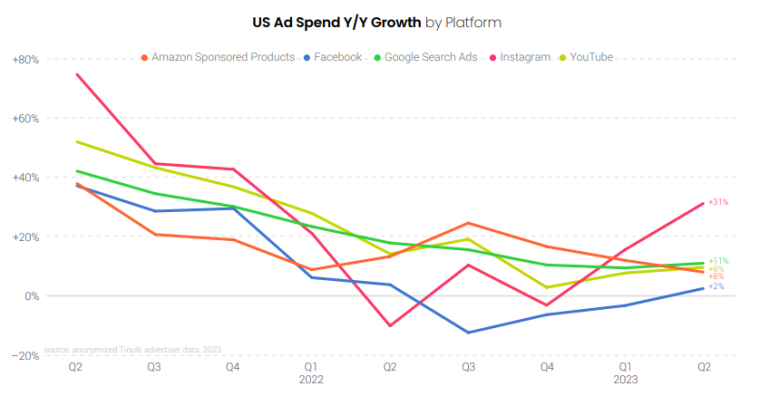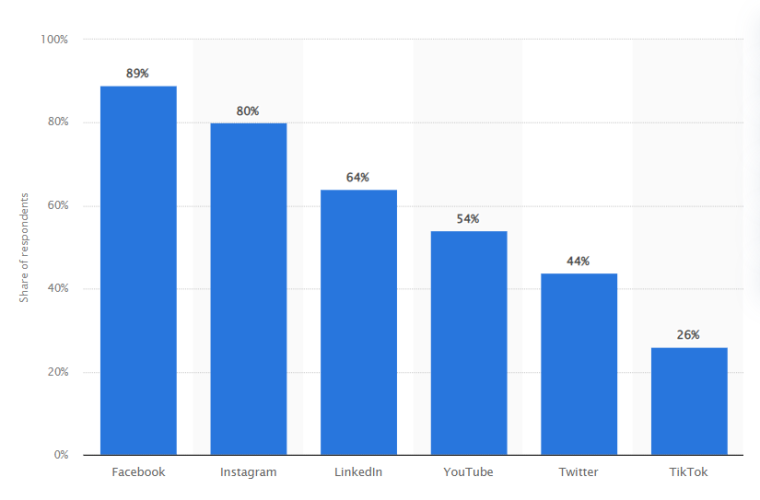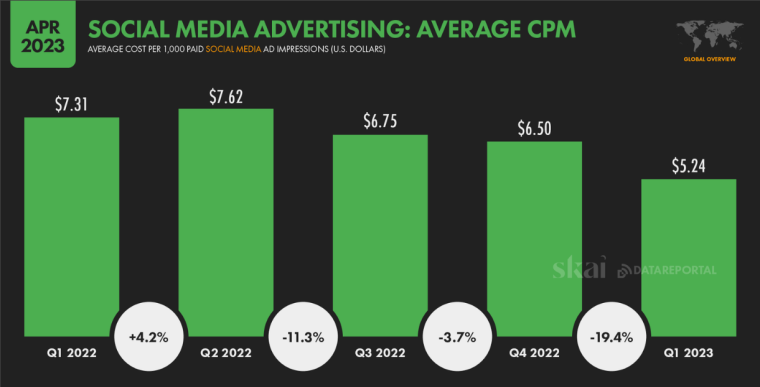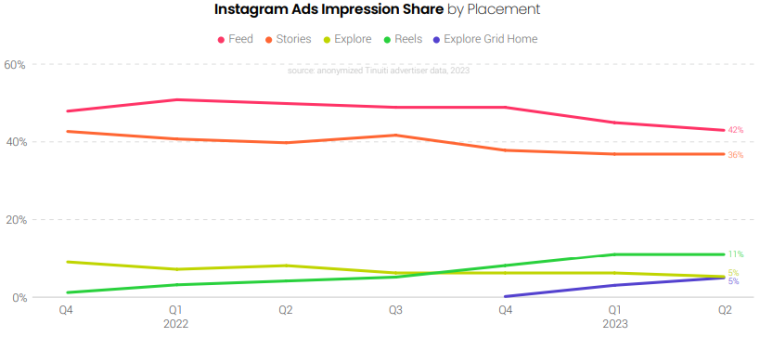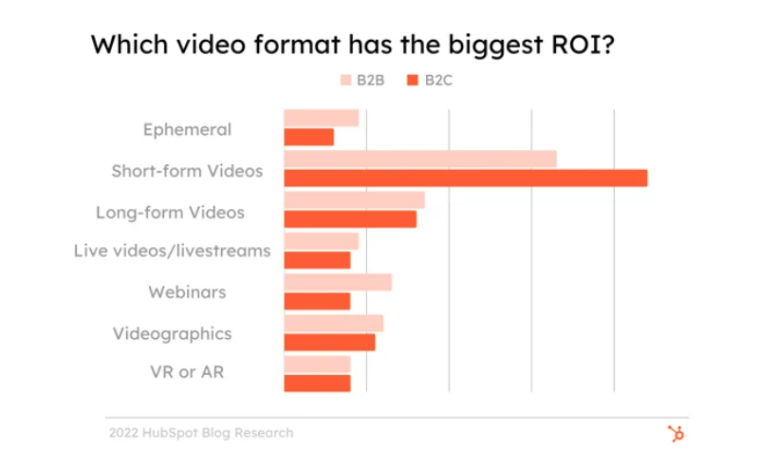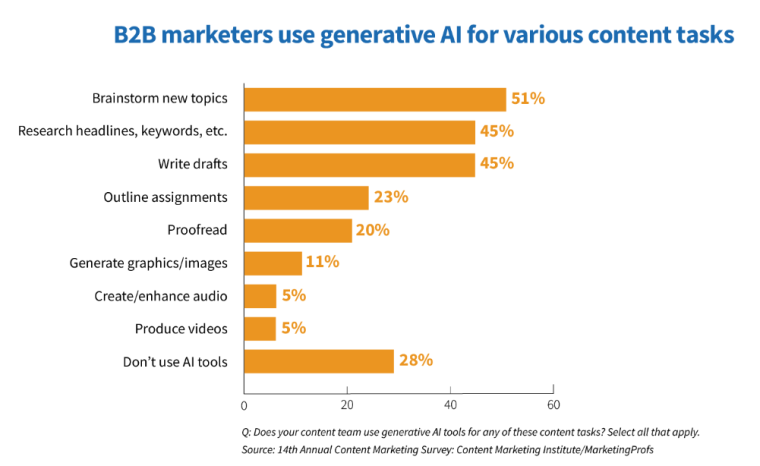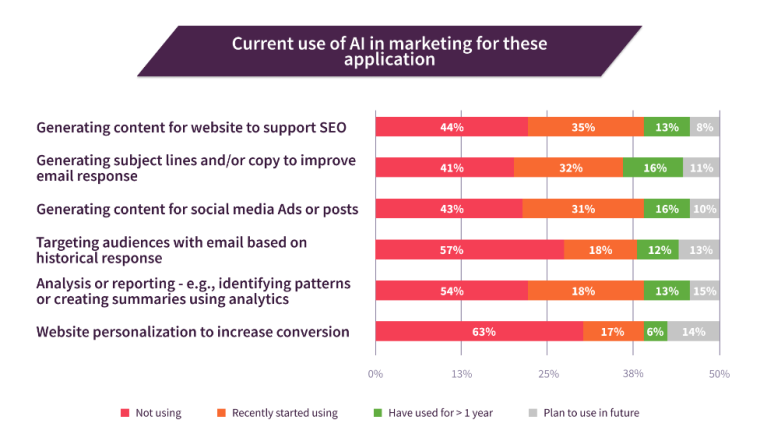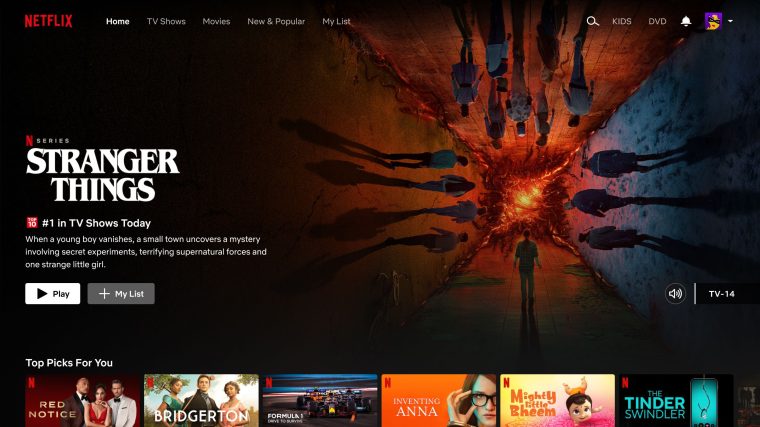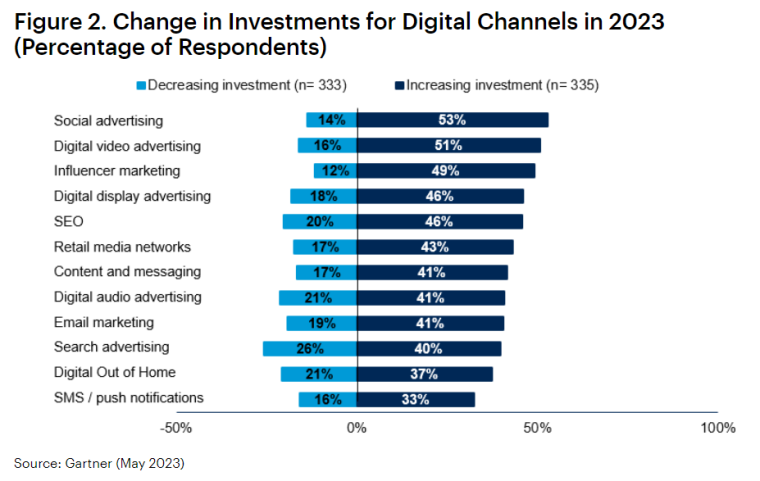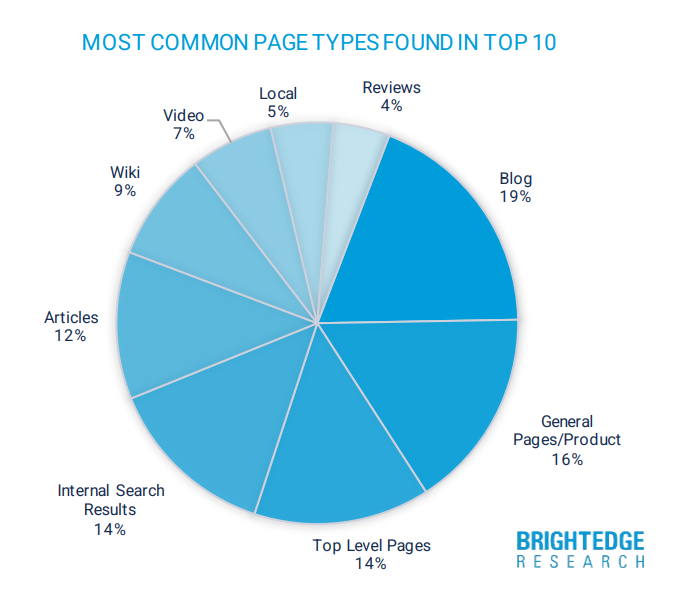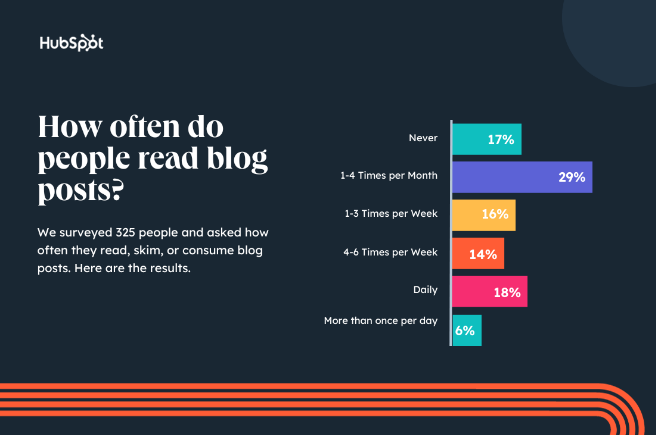In today’s fast-paced digital landscape, it’s important to stay on top of digital marketing trends to give your business or content an edge over your competitors. After all, maintaining a strong online presence to keep your audience meaningfully engaged is one of the keys to consistent revenue flow.
But with so much information out there, much of it already outdated, it can be difficult to know which trends should shape your digital marketing strategy. With this in mind, at Business2Community we’ve curated this list of emerging digital marketing trends and statistics from the latest reports, surveys, and studies in the industry. We hope you find everything you need here to give your campaigns a boost in the right direction.
The digital marketing sector is predicted to be worth $786.2 billion by 2026, representing a CAGR of 13.9% from 2020, as reported by Global Industry Analysts Inc. Statista further reported in February 2023 that CMOs were increasing their year-on-year digital marketing spend by 8.2% on average, while their traditional advertising spend was decreasing by 2.6%. And overall, 57.9% of companies’ marketing budget is now spent on digital marketing rather than traditional channels, according to a CMO survey. With that, digital advertising revenue is expected to grow from $616 billion in 2022 to $1.005 trillion in 2027, a CAGR of 12.4%, according to another Statista report. Leading the way in digital advertising growth is Instagram. Tinuiti reported in Q2 of 2023 that Instagram spending growth was 31% higher than the previous quarter, following an equally strong performance the previous quarter. Although Facebook ad spending is also increasing, growth is much slower at just 2% year-on-year. Email marketing remains a strong and persuasive form of digital marketing. The Radicati Group, Inc. predicted that 361.6 billion emails will be sent in 2024, up 4.1% from 2023. Despite all of this interest and potential, only 53% of brands that are doing digital marketing have a clearly defined digital marketing strategy, according to research from Smart Insights. That means that 47% of brands are putting time and effort into digital marketing without any defined strategy! This presents a great opportunity for you to stay ahead of your competition by taking note of the latest digital marketing trends and incorporating them into your digital strategy. So, let’s take a look at 8 specific trends that are set to shape the digital marketing world in the months and years ahead. Social media marketing is nothing new, but it is continuing to evolve and present fresh opportunities for digital marketers, especially in terms of advertising. The average user accesses 6.6 social media platforms per month, as reported by Datareportal in April 2023. The average American spends 2 hours and 15 minutes per day on social media. That’s slightly below the global average of 2 hours and 24 minutes, but it still represents a huge opportunity for you to get your brand in front of their eyes. According to a 2023 survey by Gartner, social advertising is the channel set to receive the highest increase in investment this year. 53% of CMOs said they were planning to increase spending on social advertising, with just 14% planning to cut back in this area. Which social media platforms are digital marketers investing in? According to data published on Statista in September 2023, Meta platforms are leading the way. A whopping 89% of marketers use Facebook to promote their businesses, with Instagram coming in a close second with 80% uptake. LinkedIn is the most popular of the B2B social channels, with 64% of marketers using it. Perhaps unsurprisingly, the platform that B2B marketers are moving away from is X, formerly known as Twitter. Research from the Content Marketing Institute shows that 32% of marketers have decreased their use of X/Twitter in the 12 months to October 2023, while only 10% have increased their use of it. Nevertheless, it may still be a valuable advertising platform as it may charge less than competitors due to its faltering revenue. By contrast, 72% of B2B marketers say they are using LinkedIn more than before. YouTube has the next highest increase, at 32%, followed by Facebook, at 31%. The same survey, which was published in October 2023, also found that B2B marketers rated LinkedIn as delivering by far the best value for them. When asked to select up to 3 platforms that delivered the best value for organic use, the results were as follows: 90% of B2B digital marketers use social media to deliver content organically – more than any other channel. Only 44% say that this channel delivers the best results, though. When it comes to paid advertising on social media, Instagram and Facebook seem to be delivering great results for marketers across the board right now. Of the 86% of digital marketers who use paid advertising channels, 78% use social media advertising (including sponsored posts). Tinuiti’s Q2 2023 Digital Ads Benchmark Report found that across both platforms, impressions and spending are up year-on-year, at 44% and 9%, respectively, while CPM is down 25%. Datareportal also shows a welcome drop in CPM; the average cost of 1,000 impressions dropped from $7.31 in Q1 2022 to $5.24 in Q1 2023. That’s a decrease of over 28%. These new trends can be largely attributed to the new ad formats that Meta has added to the platforms, including Reels/Shorts and Explore Grid Home placements. They have given digital advertisers new opportunities to get their ads in front of users; 11% of all ad impressions came from Reels in Q2 2023 and 5% from Explore Grid Home. However, CPM remains low while the formats are still becoming established. Similar trends are occurring on TikTok, albeit to a lesser extent, where impressions are up 16% year-on-year, spending is up 11%, and CMP is down 4%. The video advertising market is expected to be worth $91.95 billion in 2025, surpassing $100 billion by 2027, according to Statista. Indeed, in HubSpot’s 2023 State of Marketing report, marketers rated short-form video as delivering the best ROI of all the digital marketing trends, followed by influencer marketing and social media DMs. Additionally, 33% said they would be leveraging video in their 2023 marketing strategy – more than any other trend mentioned in the report. A separate study by HubSpot revealed that short-form video content is considered the most profitable of any type of video by both B2C and B2B marketers. Overall, 39% of brands said that short-form videos such as TikToks, Instagram Reels, and YouTube Shorts deliver the best ROI. This includes 44% of B2C brands and 33% of B2B. B2C brands also reported greater success than B2B in a number of other metrics regarding short-form video, including lead generation, engagement, and conversion rate. This doesn’t mean that B2B marketers should dismiss video, though. The Content Marketing Institute found that video was one of the most popular content formats for B2B marketers, tied in first place with customer case studies and stories. 53% of content marketers reported that these formats produced the best results in the past 12 months. Additionally, video marketing is the channel where marketers plan the biggest increase in investment in 2024, with 69% saying they intend to increase their video content spending. It’s no surprise that artificial intelligence (AI) is featured as one of the top marketing trends for 2023, after all the buzz around it recently. There are many ways that you can use AI as a digital marketer or a content creator, but with almost three-quarters of businesses already using it to support or influence their digital marketing efforts, it’s clear that it’s going to become an increasingly integral part of marketing. The Content Marketing Institute’s 2024 Benchmark report revealed that 72% of B2B content marketers are now using generative AI tools for their campaigns. 51% said they use generative AI to brainstorm new topics for digital content creation, while 45% use it to research relevant keywords, headlines, and meta descriptions. At the same time, 61% of these marketers say they don’t have any organizational guidelines governing the use of AI tools. This is something that businesses need to address as they get a clearer idea of how these tools can help – and the boundaries they want to draw regarding how they are used. Those who said they don’t use AI for digital content cited the following reasons: Two of these issues will be dealt with as generative AI tools are improved, and the other two can be addressed with internal training, so we can be sure that this digital marketing trend is here to stay for a while. Smart Insights offers a broader view of the ways in which businesses are already using AI (not just generative AI) for marketing: Of the companies already using AI for these purposes, around a third have been doing so for over a year, while two-thirds have adopted the technology in the past 12 months. Although ChatGPT caused a stir when it launched and gained 100 million users within the first two months, we’re going to see more alternatives emerging for digital marketers in the coming months. In particular, look out for AI tools that can: The influencer marketing industry has more than tripled in value since 2019, growing from $6.5 billion to $21.1 billion in 2023, Statista reports. HubSpot reports that this is one of the top digital marketing trends right now; 89% of marketers who already use it said they planned to maintain or increase their spending on influencer marketing in 2023, and 17% planned to try it for the first time this year. Working with influencers doesn’t mean paying top-dollar for big names to promote your products; in fact, brands are seeing the value in partnering with macro- and micro-influencers with smaller, highly targeted audiences. That said, there seems to be a trend towards working with those who have larger audiences, as the following numbers show: Twice as many companies plan to work with mega-influencers (who have over 1 million subscribers or followers) in 2023 as in 2022. Another trend we’re seeing in influencer marketing, aided by the fast-and-loud world of TikTok, is realist influencers. In contrast to highly polished Instagram and carefully edited YouTube, TikTok is a place where influencers can post raw, genuine content of their everyday lives. This offers a more trustworthy and legitimate space for brands to promote their products via influencers who present a realistic view of life. Companies are starting to use machine learning and advanced analytics to create hyper-personalized experiences for users. We are all familiar with marketing strategies such as Amazon’s product recommendations and Netflix’s ‘Top Picks For You’, which use complex algorithms, data analytics, and predictive AI to grab your attention with products or shows that will interest you. With the rapid rise of AI, this kind of technology is becoming more accessible to smaller brands and businesses who want to be able to display relevant content to grab their audience’s attention. This digital marketing trend is helped along by the phasing out of third-party cookies in 2023, being replaced by first-party data which allows businesses to deliver more personalized messages to niche audiences. Privacy measures may make it harder to market to the masses, but they do open new opportunities to make marketing campaigns highly targeted and more reliable. As marketing budgets are squeezed, search advertising is one of the areas to suffer. The Gartner survey found that 26% of CMOs are decreasing spend on paid search; more than any other channel. However, according to the Content Marketing Institute, search engine marketing (SEM) is still providing the best results; 62% of marketers rate it as their top paid channel. And data published on Statista supports steady growth for this channel. The search advertising market is expected to be worth $279.30 billion in 2023, with a CAGR of 8.69% taking it to $389.80 billion by 2027. In 2021, mobile ad spending overtook desktop for the first time, and by 2027 mobile devices will account for almost 60% of ad spending. Next on our list of top digital marketing trends for 2023 is voice search optimization. Smart speakers are here to stay; Statista reported that there were 320 million smart speakers in the world in 2020, and that number was expected to double to 640 million by 2024. China and the US are the two countries that use smart speakers the most to perform voice search commands. The Smart Audio Report from NPR found that 62% of American adults use a voice assistant, either on a smartphone, smart speaker, or an in-car device. 57% of people who use voice commands do so at least daily, and it’s estimated that as many as 62% make purchases through voice search. In order to capitalize on the voice search digital marketing trend, marketers should: There’s no doubt that search engine optimization (SEO) has been disrupted in the past year, with AI-powered writing tools enabling content production at a scale never before possible, and AI-generated search results taking visibility from the websites and blogs that work so hard to be in the number one spot. But despite all the disruption and fresh claims that SEO is dead, this simply isn’t true. According to HubSpot’s 2023 State of Marketing report, 33% of marketers were already leveraging blogging in their marketing strategy, and a further 26% planned to use it for the first time in 2023. Although video is likely to grow more dominant, marketers still value blogging, saying it delivers the 3rd best ROI, behind videos and images. Research from BrightEdge, which analyzed 10,000 keywords representative of the most common searches across multiple industries, found that blog pages appear more often in the top 10 search results than any other type of content. Search engines display blogs in 19% of top-10 search results, the research found. The study also noted that blogs tend to have a 50% higher word count and a higher text-to-code ratio than other types of pages. Further research by Hubspot has revealed that although 17% of people say they never read blogs, over half (54%) read them at least once a week. In the same survey, 35% of respondents said they were consuming more blog content than the previous year. 57% said their reading had stayed the same, while only 9% reported reading less. Of all the digital marketing trends we have covered here, some are brand new and others are simply proving their longevity after many years. However, even the more established marketing strategies, such as social media and blogging, are evolving all the time. Whether it’s certain platforms becoming increasingly popular or new approaches to reaching potential customers, marketers cannot afford to just keep doing what they’ve always done in the hope that the results will stay the same. <Key Digital Marketing Trends
What are 2025’s Top Digital Marketing Trends?
1. Social Media Marketing
2. Video Marketing
3. Artificial Intelligence
4. Influencer Marketing Led by Micro-Influencers
Type of influencer
Audience size
% of companies in 2022
% of companies in 2023
Nano-influencers
1,000-9,999
27%
21%
Micro-influencers
10,000-99,999
64%
53%
Macro-influencers
100,000-999,999
57%
65%
Mega-influencers
1,000,000+
24%
42%
5. Personalized Content
6. Search Advertising
7. Voice Search Optimization
8. SEO & Blogging
The Future of Digital Marketing
FAQs
What are current trends in digital marketing?
What are key digital trends?
What is the future of digital marketing?

